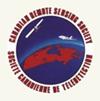Pix2Pix Network to Estimate Agricultural Near Infrared Images from RGB Data
IF 2.1
4区 地球科学
Q3 REMOTE SENSING
引用次数: 7
Abstract
Abstract Remote sensing has been applied to agriculture, making it possible to acquire a large amount of data far away from crops, providing information for decision making by producers that can impact production costs and crops quality. One way of getting the production information is through vegetation indices, arithmetic operations that use spectral bands, especially the Near Infrared (NIR). However, sensors that capture this spectral information are very expensive for small producers to afford it. In a previous article, a pixel-to-pixel image synthesis model to estimate NIR images from RGB data using hyperspectral endmembers (pure hyperspectral signatures) was described. In this work, an image-to-image synthesis model, known as Pix2Pix, is used for estimating NIR images from low-cost RGB camera images. Pix2Pix is a kind of Generative Adversarial Networks (GANs), composed by two neural networks, a generator (G) and a discriminator (D), that compete. G learns to create images from a random noise inputs and D learns to verify if these images are real or fake. The results showed that the presented method generated NIR images quite similar to real ones, reaching a value of 0.912 on M3SIM similarity metric, outperforming results obtained with the previous endmembers method (0.775 on M3SIM).基于RGB数据估计农业近红外图像的Pix2Pix网络
摘要遥感已应用于农业,使其能够在远离作物的地方获取大量数据,为生产者的决策提供信息,从而影响生产成本和作物质量。获取生产信息的一种方法是通过植被指数,即使用光谱波段的算术运算,尤其是近红外(NIR)。然而,对于小型生产商来说,捕捉这种光谱信息的传感器非常昂贵。在之前的一篇文章中,描述了一种像素到像素的图像合成模型,该模型使用高光谱端元(纯高光谱特征)从RGB数据中估计近红外图像。在这项工作中,一种被称为Pix2Pix的图像到图像合成模型被用于从低成本的RGB相机图像中估计近红外图像。Pix2Pix是一种生成对抗性网络,由两个竞争的神经网络组成,一个是生成器(G),另一个是鉴别器(D)。G学习从随机噪声输入创建图像,D学习验证这些图像是真的还是假的。结果表明,所提出的方法生成的近红外图像与真实图像非常相似,在M3SIM相似性度量上达到0.912的值,优于之前的端元方法(在M3SIM上为0.775)获得的结果。
本文章由计算机程序翻译,如有差异,请以英文原文为准。
求助全文
约1分钟内获得全文
求助全文
来源期刊

Canadian Journal of Remote Sensing
REMOTE SENSING-
自引率
3.80%
发文量
40
期刊介绍:
Canadian Journal of Remote Sensing / Journal canadien de télédétection is a publication of the Canadian Aeronautics and Space Institute (CASI) and the official journal of the Canadian Remote Sensing Society (CRSS-SCT).
Canadian Journal of Remote Sensing provides a forum for the publication of scientific research and review articles. The journal publishes topics including sensor and algorithm development, image processing techniques and advances focused on a wide range of remote sensing applications including, but not restricted to; forestry and agriculture, ecology, hydrology and water resources, oceans and ice, geology, urban, atmosphere, and environmental science. Articles can cover local to global scales and can be directly relevant to the Canadian, or equally important, the international community. The international editorial board provides expertise in a wide range of remote sensing theory and applications.
 求助内容:
求助内容: 应助结果提醒方式:
应助结果提醒方式:


